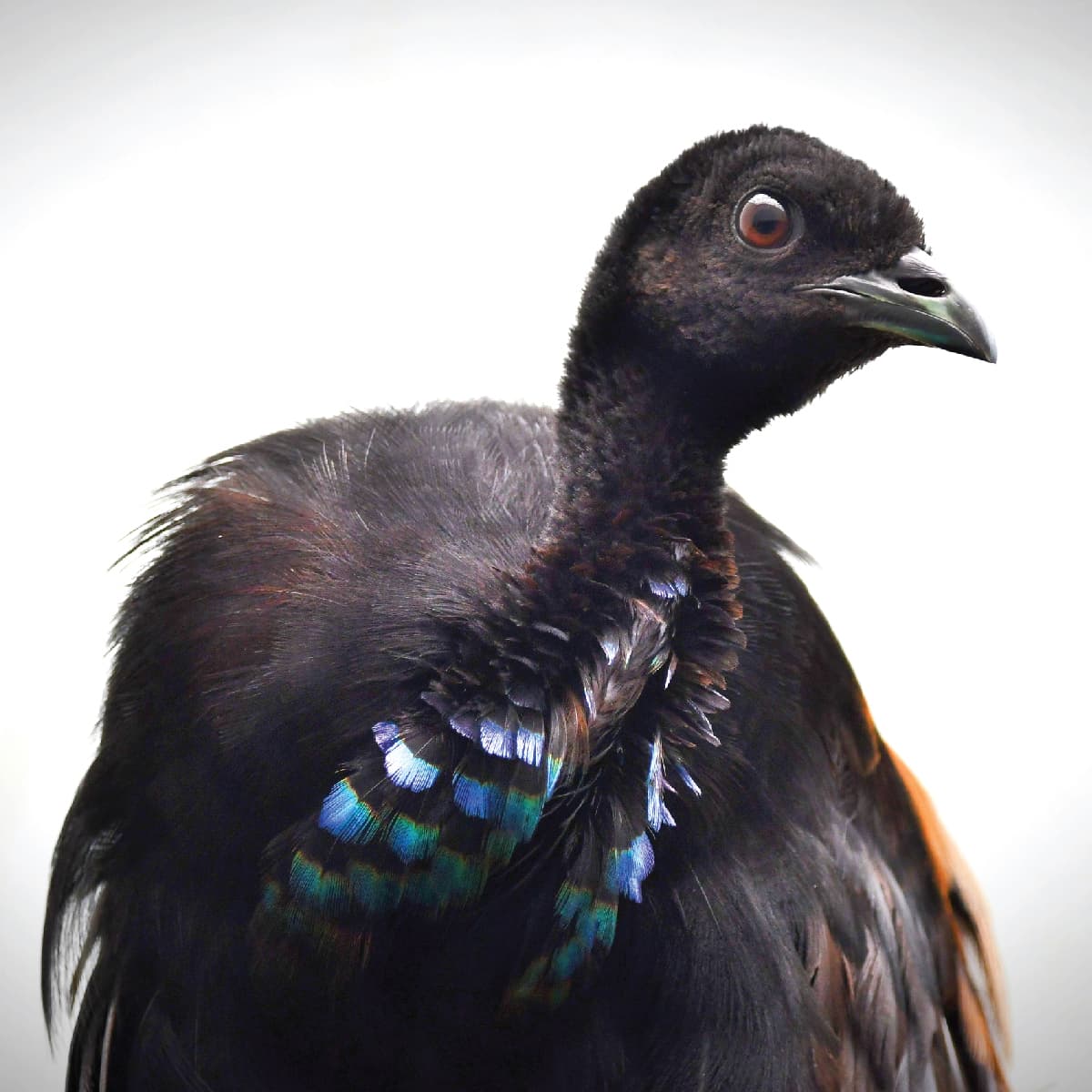The Grey-winged Trumpeter: A Fascinating Musician of the South American Rainforests
Deep within the lush and vibrant tapestry of South American rainforests, a captivating bird roams the forest floor, enchanting all who hear its distinct call—the Grey-winged Trumpeter (Psophia crepitans). With its striking appearance, unique trumpet-like call, and intriguing foraging habits, this bird stands out as a true marvel of the tropical rainforest.

The Grey-winged Trumpeter is a member of the cracid family, a group of birds known for their ground-dwelling habits and fascinating vocalizations. Measuring around 23 to 28 inches (60 to 70 centimeters) in length, this charismatic bird boasts a distinctive plumage characterized by shades of grey and black on its wings and body. Its most striking feature is its bare, bright red head, which adds a splash of color to its otherwise subdued appearance.
Living in small groups of 5 to 12 individuals, Grey-winged Trumpeters are highly social and often display strong family bonds. These birds are skilled communicators, using a range of vocalizations to communicate with each other and alert their group to potential threats or sources of food. Their most remarkable call, often described as a “trumpet” or “whistling,” is a clear and resonant sound that can be heard echoing through the rainforest, adding a musical note to the wilderness.
While their striking appearance and unique call are enough to capture the attention of birdwatchers and nature enthusiasts, the Grey-winged Trumpeter’s foraging habits are equally fascinating. Unlike many other birds that primarily search for food in the treetops, these ground-dwelling birds forage for fruit and insects on the forest floor. Their long legs and strong feet are well-adapted for scratching and probing the leaf litter in search of tasty treats.
As omnivores, Grey-winged Trumpeters have a varied diet, feasting on fallen fruits, seeds, small invertebrates, and even the occasional reptile or amphibian. Their ability to disperse seeds as they forage contributes to the maintenance of the rainforest’s ecological balance, making them important players in the forest’s biodiversity.
Despite their significance in the ecosystem, Grey-winged Trumpeters face challenges to their survival. Habitat destruction due to deforestation and human encroachment threatens their populations, as does hunting for meat and feathers in certain regions. Conservation efforts are essential to protect these enchanting birds and preserve their natural habitats.
Many organizations and researchers are dedicated to studying and conserving the Grey-winged Trumpeter and its rainforest home. By raising awareness about the bird’s ecological role and the importance of rainforest conservation, we can contribute to safeguarding these fascinating musicians of the South American rainforests.

Encountering the Grey-winged Trumpeter in its native habitat is a true delight for any nature lover. Its striking appearance, unique call, and intriguing foraging habits remind us of the wonders of biodiversity and the vital importance of protecting these fragile ecosystems.
As we celebrate the Grey-winged Trumpeter’s presence in the tropical rainforests, let us also embrace our responsibility to be guardians of the natural world. Through collective efforts and conservation initiatives, we can ensure that this captivating bird continues to grace the rainforests of South America, filling the air with its enchanting trumpet-like call for generations to come.





